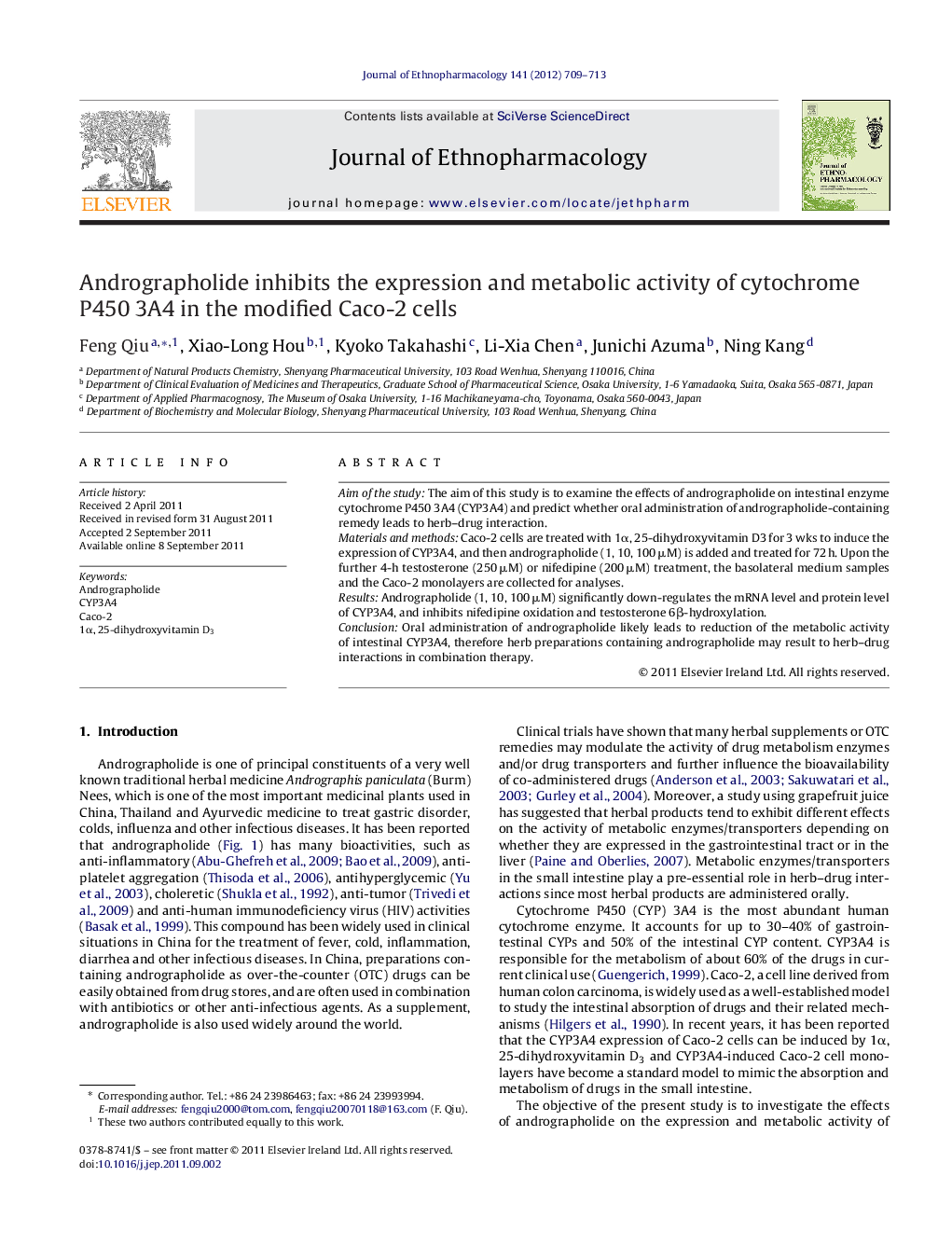| Article ID | Journal | Published Year | Pages | File Type |
|---|---|---|---|---|
| 2545609 | Journal of Ethnopharmacology | 2012 | 5 Pages |
Aim of the studyThe aim of this study is to examine the effects of andrographolide on intestinal enzyme cytochrome P450 3A4 (CYP3A4) and predict whether oral administration of andrographolide-containing remedy leads to herb–drug interaction.Materials and methodsCaco-2 cells are treated with 1α, 25-dihydroxyvitamin D3 for 3 wks to induce the expression of CYP3A4, and then andrographolide (1, 10, 100 μM) is added and treated for 72 h. Upon the further 4-h testosterone (250 μM) or nifedipine (200 μM) treatment, the basolateral medium samples and the Caco-2 monolayers are collected for analyses.ResultsAndrographolide (1, 10, 100 μM) significantly down-regulates the mRNA level and protein level of CYP3A4, and inhibits nifedipine oxidation and testosterone 6β-hydroxylation.ConclusionOral administration of andrographolide likely leads to reduction of the metabolic activity of intestinal CYP3A4, therefore herb preparations containing andrographolide may result to herb–drug interactions in combination therapy.
Graphical abstractFigure optionsDownload full-size imageDownload high-quality image (124 K)Download as PowerPoint slide
